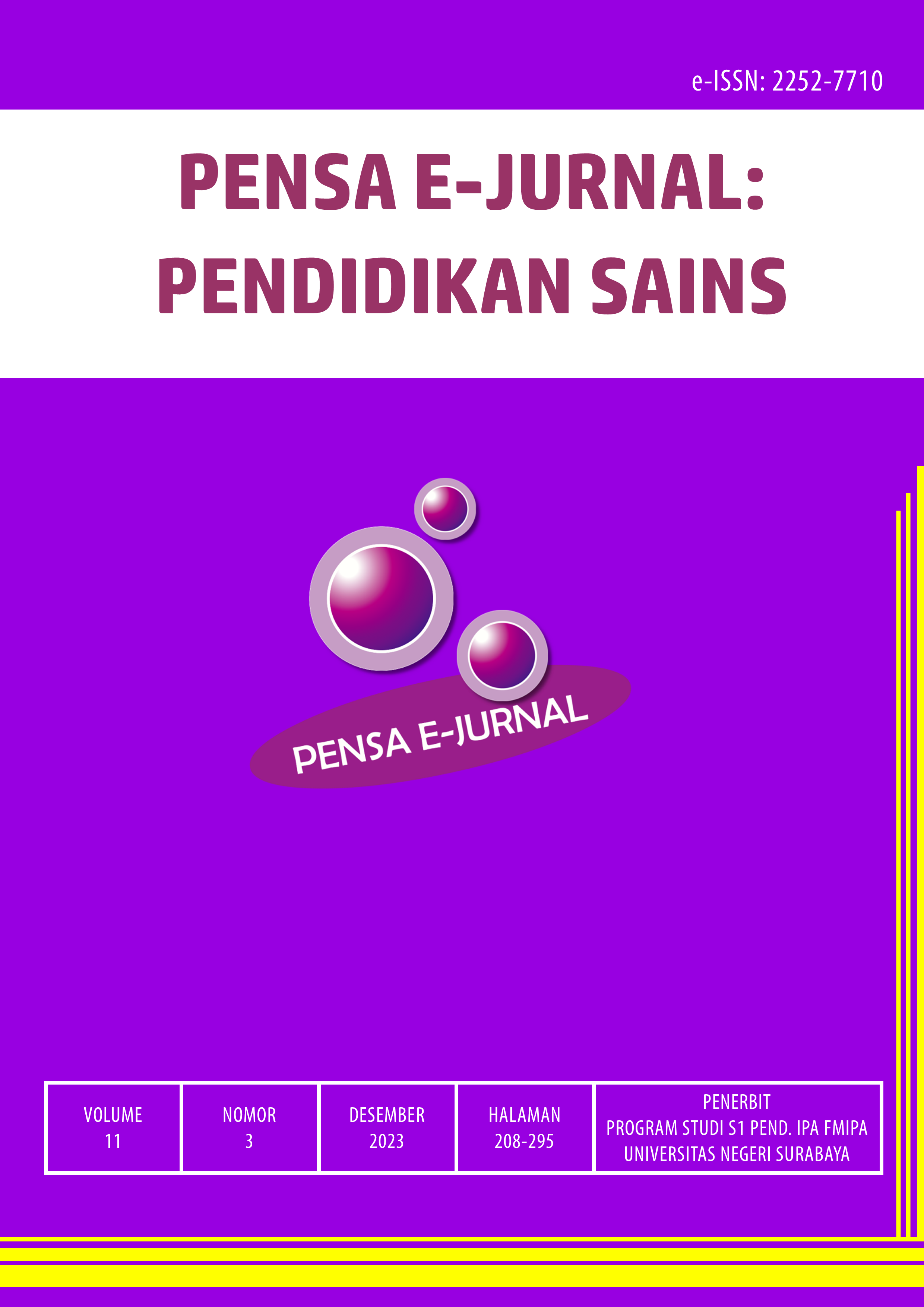PEMAHAMAN KONSEP GELOMBANG SISWA DALAM PEMBELAJARAN BERBASIS VIRTUAL LAB
DOI:
https://doi.org/10.26740/pensa.v11i3.55394Keywords:
understanding the concept of waves, real lab, virtual labAbstract
This study aimed to describe the conceptual understanding of a wave of students who took part in virtual lab-based learning at one of the Junior High Schools (SMP) in Jombang Regency. Comparative study is the type of research used. The study was carried out using two classes where there were 30 people in each class. A two-group pretest-posttest design research design was used in this study. The test method is a data collection technique applied in this study. The results of the study show that students' understanding of the concept of waves in the pretest and posttest using the Mann-Whitney test was obtained respectively 0.546 and 0.058 > 0.05, which means there is no significant difference in both the pretest and posttest in understanding the concept of students' waves between virtual lab-based classes. as well as real lab-based classes. Analysis of the average Normalized Gain (N-Gain) in the virtual class was found to be in the high category.
Downloads
Downloads
Published
How to Cite
Issue
Section
 Abstract views: 128
,
Abstract views: 128
, PDF Downloads: 79
PDF Downloads: 79

















